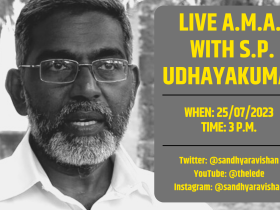By Sandhya Sridhar
Politics is a fine art. It’s not just about statecraft or the desire to enter a life of service to the people. It’s a lot more. A budding politician for example, should first establish his or her credentials to the people at large. This includes not just one’s political philosophy or ideology, but also one’s ability to present an image that is interesting and acceptable.
The first treatise on politics, statecraft, and establishing the basics of administration was written by Kautilya, popularly known as Chanakya, in 375-283 BCE. Kautilya was an adviser and minister to Chandragupta Maurya and later, his son, Bindusara. Kautilya, it is believed, was instrumental in establishing the Mauryan empire, through his sharp and shrewd strategies, and wise thinking.
Interestingly, Kautilya, also known as Vishnugupta, wrote a treatise called the Arthashastra, within which he laid down the frameworks of business, trading, administration, law, order, and kingship. He even enumerated the different departments that would be required to run a kingdom, like Revenue, Agriculture, Treasury, Mines and Factories, Weapons, Trade, Forests, Armoury, etc. He even set out how one could build a fortified city with residential areas, places for business and trade, and for various others. While setting out the process of revenue collection and accounting, he even put forth the steps wherein the state could recover revenues misappropriated by employees of the state.
Kautilya put down laws of marriage, rules regarding the property of a woman, and even what should be done regarding wealth, if a widowed woman chose to marry again. Laws on inheritance, contingencies when calamities take place, and a judicial structure were all articulated in great detail in his treatise.
Kautilya set out the attributes that a ruler should have – that he shall have intelligence and be of good spirit, be energetic and respect elders, and have the ability to discern between good and bad, truth and lies. He believed that peace brought about wealth and security to a kingdom or nation, allowing people to explore the good things in life.
But he was realistic too, that war is a possibility, when kingdoms interact, and laid down the rules of battle, including the identification and training of people who would be apt for the secret service.
The Arthashastra is holistic, offering us an understanding that for all vocations, training and rules are necessary for smooth administration. For example, Kautilya tells us that a king who is heavy with the rules of punishment terrorises those he rules, while one who is easy with punishment is not respected.
It is the king who uses justice to rule and to punish who is honoured and celebrated. This could also be seen as an important projection of how a ruler should be perceived by the general populace, what we today call image management.
Kautilya tells us, that the king or ruler, while establishing a council of ministers, should test their integrity by having secret agents instigate them in some manner – for example, by offering the ministers treasures, or by telling them that they could bring down the ruler and destroy him. He explains these stratagems in minute detail, telling the ruler the ruses he can use to test the faithfulness of those in his inner circle.

Those who emerge to be loyal should be given the respective posts. For example, the one who refused material gains, could be in charge of the treasury. Or the one who refused to bring down the king could be appointed head of his secret service or the commander of the army.
For those who prove disloyal, Kautilya says, their punishment would be working in mines, in factories or in forests!
Good counsel, says Kautilya, is most important for a ruler. A loyal band of counsellors should support the ruler, helping him make decisions in all the facets of administration. He urges that this secret council meet at a place where even the birds cannot look in!
The ruler, states this master strategician, should not just guard his nation and his people from enemies, but his own person using all the tactics available at his disposal!
A detailed perusal of the Arthashastra will tell us that administration, statecraft, diplomacy and kingship (or governance) are not greatly different today. The basics remain the same, augmented though by modern technologies and tools for statecraft.
The ruler does need to keep his counsel most sensibly and within an inner council that guides him, but also ensures that he or she is perceived by the people as being worthy of respect.
And yes, similarly today, any politician worth his or her salt should understand how to use social media and communication strategies, as also how to put out one’s image for public consumption. Flattering photography, therefore, along with an understanding of how to pose, is definitely a must-have weapon in the political armoury! Politics thus, is certainly an art that one needs to master, to beat one’s rival at the hustings.
Postscript: Kautilya has outlined the role of the one who is in Charge of Liquor Control quite clearly, with suggestions of how to maintain records and accounts. He also sets out how to build drinking houses, with beds, seats and places to drink, ensuring the places is delightfully decorated and perfumed. And oops! He also suggests that secret agents lurk in these drinking houses to get information from the varied people who flock there!













Leave a Reply